In the digital age, where education intersects with technology, the emergence of adaptive eBooks has redefined the landscape of personalized learning. Far beyond static textbooks or traditional eBooks, these dynamic educational resources leverage intricate algorithms and data-driven insights to tailor content based on individual learning preferences. This comprehensive exploration aims to deepen our understanding of adaptive eBooks, unraveling the intricacies of their design, and elucidating their transformative impact on personalized education.
Understanding Adaptive eBooks:
Adaptive eBooks represent a pedagogical evolution, transcending the limitations of one-size-fits-all educational materials. At their core, these digital resources are designed to dynamically adapt to the unique learning needs, styles, and paces of each individual student. Unlike conventional textbooks, which present a uniform set of content to all learners, adaptive eBooks employ sophisticated algorithms that analyze user interactions, performance data, and preferences to create a personalized learning experience.
Machine Learning Algorithms:
Adaptive eBooks leverage advanced machine learning algorithms that evolve with each user interaction. These algorithms analyze a myriad of data points, including reading speed, comprehension level, interactive engagement, and assessment performance. This continuous learning process refines the algorithms, ensuring a more accurate adaptation to individual learning needs over time.
Dynamic Content Adjustments:
The adaptability of these eBooks extends beyond simple customization. The content within adaptive eBooks undergoes dynamic adjustments based on real-time user interactions. As students progress through the material, the system continuously assesses their responses and refines the content to match their evolving understanding, creating a truly responsive and evolving learning experience.
Cognitive and Behavioral Analysis:
Beyond academic performance, adaptive eBooks delve into cognitive and behavioral aspects of learning. They analyze how students approach problem-solving, their preferred learning styles, and the strategies they employ when faced with challenges. This holistic analysis allows the system to tailor content not just based on academic proficiency but also on the cognitive processes that define each learner.
Learning Preferences Profiling:
Adaptive eBooks create comprehensive profiles of individual learning preferences. This goes beyond surface-level preferences and delves into nuanced aspects such as preferred multimedia formats, ideal difficulty levels, and even preferred times of day for optimal learning. By considering these intricate details, adaptive eBooks offer a learning environment that resonates with the student on a deeply personalized level.
Continuous Adaptation Feedback Loop:
The adaptation process within adaptive eBooks is not a one-time event but an ongoing feedback loop. As students engage with the content, the system continues to adapt, refining the learning experience in response to evolving user needs. This continuous loop ensures that the educational journey remains dynamic and responsive throughout the entire learning process.
Adaptive Strategies for Different Subjects:
Recognizing that learning needs can vary across subjects, adaptive eBooks implement diverse adaptive strategies. For example, in a language learning context, the system may emphasize vocabulary building for a student struggling with language comprehension, while in a mathematics context, it may focus on reinforcing fundamental concepts for a student facing challenges in problem-solving.
User-Initiated Adaptations:
Empowering students to take control of their learning journey, adaptive eBooks often allow users to initiate adaptations based on their preferences. This could include adjusting the pace of content delivery, selecting specific topics for in-depth exploration, or choosing preferred assessment formats. This user-driven adaptability enhances the sense of agency and personalization.
Cross-Platform Adaptability:
Adaptive eBooks seamlessly adapt across various platforms and devices. Whether accessed on a desktop computer, tablet, or smartphone, the learning experience remains consistent and personalized. This cross-platform adaptability ensures accessibility and flexibility for students with diverse technological resources.
Incorporation of Natural Language Processing:
Some adaptive eBooks integrate natural language processing capabilities. This allows the system to understand not just correct answers but also the reasoning and thought processes behind user responses. By understanding the nuances of language and expression, adaptive eBooks can provide more targeted and contextually relevant feedback.
Customizable Learning Goals:
Adaptive eBooks often enable users to set and customize their learning goals. Students can define specific objectives, such as mastering a particular skill or completing a set of modules within a specified timeframe. The adaptive system then tailors the learning path to align with these individualized goals.
Scaffolding Techniques for Difficult Concepts:
To address challenging concepts, adaptive eBooks employ scaffolding techniques. When a student encounters difficulty with a particular topic, the system may provide additional support in the form of supplementary resources, guided explanations, or interactive activities. This scaffolding ensures that students receive the necessary assistance to overcome hurdles in their learning journey.
Integration of Gamification Elements:
To enhance engagement and motivation, adaptive eBooks may incorporate gamification elements. These could include interactive quizzes, challenges, and rewards for completing certain milestones. Gamification not only makes the learning experience more enjoyable but also incentivizes progress.
Collaborative Learning Features:
Some adaptive eBooks offer collaborative learning features, enabling students to engage in group activities, discussions, or projects. The system adapts to the collaborative dynamics, considering group interactions and providing personalized feedback based on both individual and collective contributions.
Key Features of Adaptive eBooks:
Personalized Content:
Adaptive eBooks harness the power of machine learning to delve deep into the nuances of individual learning patterns. By assessing user interactions, preferences, and performance, the content dynamically adjusts to align with the learner’s style, pace, and comprehension level. This goes beyond mere customization, offering a tailored educational journey for each student.
Adaptive Assessments:
Embedded assessments within adaptive eBooks are not static quizzes but dynamic evaluators that respond to the learner’s responses. If a student displays a strong understanding of a concept, the eBook intelligently advances to more complex material. Conversely, if a challenge is identified, the eBook provides additional explanations, examples, or interactive exercises for reinforced learning.
Multimodal Learning Resources:
Recognizing the diversity of learning preferences, adaptive eBooks incorporate a rich tapestry of multimedia elements. From interactive simulations and visual aids to videos and audio clips, these resources cater to auditory, visual, and kinesthetic learners alike. This multimodal approach transcends traditional boundaries, enhancing overall comprehension and engagement.
Real Time Feedback Loop:
Adaptive eBooks are equipped with real-time feedback mechanisms. Instant assessment results highlight areas of proficiency and those requiring further attention. This immediate feedback loop empowers students to actively track their progress, identify areas for improvement, and take control of their learning journey, fostering a sense of ownership.
Individualized Learning Paths:
The hallmark of adaptability lies in the generation of individualized learning paths. Informed by user performance and preferences, adaptive eBooks construct unique trajectories through the content. These learning paths are tailored to maximize understanding and retention, recognizing that every learner has a distinctive educational journey.
Predictive Analytics for Continuous Improvement:
Beyond immediate adaptations, adaptive eBooks leverage predictive analytics. By analyzing user data over time, these systems can anticipate future learning needs, enabling proactive adjustments to content delivery. This feature ensures that the educational experience is not only personalized but also continuously refined based on evolving user requirements.
Software Requirements for Adaptive eBooks:
Authoring Tools:
Authoring tools are essential for creating the content of adaptive eBooks. These tools should support the integration of adaptive features, such as the ability to embed assessments, multimedia elements, and dynamic content adjustments. Examples include Adobe Captivate, Articulate Storyline, and H5P.
Learning Management System (LMS):
An LMS serves as the central platform for managing and delivering adaptive eBooks. It should support user authentication, content distribution, tracking learner progress, and providing analytics. Popular LMS options include Moodle, Canvas, and Blackboard.
Content Management System (CMS):
A CMS is crucial for organizing and storing the content that makes up adaptive eBooks. It allows content creators to upload, modify, and organize text, multimedia elements, and assessments. WordPress, Drupal, and Joomla are examples of CMS platforms commonly used in education.
Machine Learning Frameworks:
To implement machine learning algorithms that drive adaptive features, developers may utilize machine learning frameworks. TensorFlow and PyTorch are popular frameworks that enable the integration of machine learning capabilities into the adaptive eBook system.
Natural Language Processing (NLP) Libraries:
For adaptive eBooks incorporating natural language processing, NLP libraries are essential. Libraries such as NLTK (Natural Language Toolkit) and spaCy enable the system to analyze and understand user responses, providing contextually relevant feedback.
Database Management System:
A robust database management system is necessary to store and retrieve user data, content, and adaptation preferences. MySQL, PostgreSQL, and MongoDB are common database systems used in educational technology applications.
Web Development Technologies:
Adaptive eBooks often rely on web technologies for delivery. HTML5, CSS, and JavaScript are fundamental for creating interactive and dynamic user interfaces. Responsive web design principles should be applied to ensure cross-platform adaptability.
Assessment Engines:
Assessment engines are responsible for creating, delivering, and evaluating assessments within adaptive eBooks. These engines should support adaptive assessment algorithms. Questionmark, Quizlet, and EdX are examples of platforms with robust assessment capabilities.
Analytics and Reporting Tools:
Analytics tools provide insights into user engagement, learning progress, and areas that may require adaptation. Google Analytics, Learning Locker, and Tableau are examples of tools that can be integrated for comprehensive analytics.
Security Software:
Given the sensitive nature of user data in educational settings, security software is crucial. This includes encryption tools, firewalls, and secure sockets layer (SSL) certificates to protect user information.
Gamification Platforms:
If gamification elements are incorporated, specific platforms or libraries for gamification may be required. Platforms like Kahoot! or game development libraries like Phaser can enhance the gamified aspects of adaptive eBooks.
Hardware Requirements for Adaptive eBooks:
Server Infrastructure:
Adaptive eBook systems require server infrastructure to host and deliver content. The server should have sufficient processing power, storage, and bandwidth to handle concurrent user access. Cloud services like Amazon Web Services (AWS) or Microsoft Azure are commonly used for scalable server infrastructure.
Database Server:
A dedicated database server is essential for storing user data, adaptation preferences, and content. The database server should be capable of handling large volumes of data efficiently.
Computing Devices for Content Creation:
Content creators and instructional designers may require standard computing devices such as desktop computers or laptops with sufficient processing power, memory, and graphics capabilities. These devices are used to develop and edit the content of adaptive eBooks.
End User Devices:
Adaptive eBooks should be accessible on various end-user devices. This includes desktop computers, laptops, tablets, and smartphones. The hardware requirements for end-user devices will depend on the complexity of the content and the functionalities of the adaptive eBook.
Networking Equipment:
Reliable networking equipment, including routers and switches, is essential for seamless data transfer between end user devices and the server hosting the adaptive eBook platform. High speed internet connectivity is crucial for a smooth user experience.
Storage Solutions:
Adequate storage solutions are required to store multimedia content, assessments, and user data. This may involve cloud storage services or on premises storage solutions depending on the scale of the adaptive eBook platform.
Security Infrastructure:
Security hardware components, such as firewalls and intrusion detection/prevention systems, are necessary to safeguard the server infrastructure and user data from potential cyber threats.
Interactive Devices (Optional):
If the adaptive eBook includes interactive elements that respond to touch or gestures, devices with touchscreens or interactive whiteboards may be necessary, especially in educational settings.
Printing Devices (Optional):
In some cases, adaptive eBooks may allow users to print specific materials. In such instances, standard printing devices compatible with the end-user devices may be required.
Backup Systems:
Implementing backup systems is crucial for data integrity and recovery. This includes both regular data backups and redundancy measures to ensure minimal disruptions in the event of hardware failures.
Augmented Reality (AR) Devices (Optional):
For adaptive eBooks incorporating augmented reality elements, AR devices such as AR glasses or smartphones with AR capabilities may be required to enhance the interactive and immersive aspects of the content.
Benefits of Adaptive eBooks:
Holistic Addressal of Learning Diversity:
The adaptive nature of these eBooks ensures that a diverse range of learning styles is accommodated. Whether a student is an auditory, visual, or kinesthetic learner, adaptive eBooks provide content in a manner that resonates with their preferences, promoting a more inclusive and effective learning environment.
Elevated Engagement Levels:
The interactivity and dynamism of adaptive eBooks significantly enhance student engagement. The incorporation of multimedia elements, coupled with personalized challenges, sustains interest and motivation throughout the learning process, fostering a positive and interactive educational experience.
Accommodation of Individual Learning Paces:
One of the standout features of adaptive eBooks is their ability to synchronize with individual learning paces. Recognizing that each student absorbs information at a different speed, these resources facilitate a personalized journey, mitigating feelings of frustration or inadequacy often associated with uniform learning materials.
Improved Information Retention:
The personalized learning experiences offered by adaptive eBooks contribute to heightened information retention. When educational content aligns with individual cognitive processes, students are more likely to retain and apply what they’ve learned, fostering a deeper understanding of the subject matter.
Empowerment of Self Directed Learning:
Adaptive eBooks empower students to become active participants in their learning process. Through the ability to choose learning paths, receive instant feedback, and access supplementary resources, learners develop a sense of autonomy and responsibility, cultivating valuable skills for lifelong learning.
Challenges and Considerations:
Data Privacy and Security:
The collection of user data for personalization raises legitimate concerns regarding data privacy and security. Developers and educational institutions must prioritize robust data protection measures, ensuring the confidentiality and integrity of student information.
Content Quality and Accuracy:
Maintaining the accuracy and quality of adaptive content is imperative for the efficacy of these digital resources. Continuous updates, rigorous validation processes, and collaboration with subject matter experts are essential to uphold the educational integrity of the material.
Addressing Access and Equity Disparities:
Disparities in access to technology and the internet can hinder the effectiveness of adaptive eBooks. Efforts should be undertaken to bridge these inequalities, ensuring that all students, regardless of socio-economic factors, have equitable access to personalized learning resources.
Case Studies:
Khan Academy:
Khan Academy stands as a prominent example of adaptive learning. Its platform provides personalized exercises and resources based on individual student performance, creating a tailored educational experience across various subjects.
BookWidgets:
BookWidgets offers adaptive eBooks that seamlessly integrate with various learning management systems. Educators can leverage these dynamic resources to create content and assessments tailored to the unique needs of each student.
Future Directions:
As technology continues its relentless march forward, the future of adaptive eBooks holds exciting possibilities. The integration of artificial intelligence for more refined predictive learning analytics, further enhancements in user interfaces, and the incorporation of augmented reality elements are avenues where ongoing innovations are anticipated.
The development of adaptive eBooks represents a monumental stride in the realm of educational technology. By tailoring content to individual learning preferences in a dynamic and adaptive manner, these digital resources empower students, enhance engagement, and foster a more personalized and effective learning experience. As technology continues to advance, the future promises an educational landscape where adaptive eBooks play a pivotal role in customizing education to meet the diverse needs of every learner, ensuring that no student is left behind in the pursuit of knowledge.



